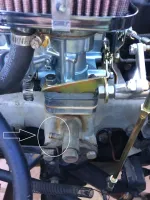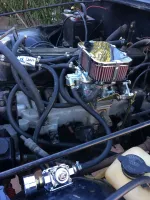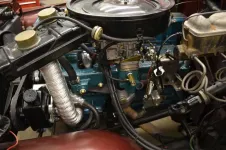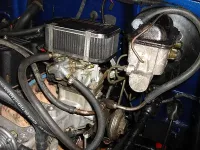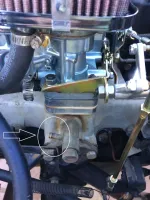Engine wants to stall
JeepCJ5
Jeeper
So I just put my fuel system back together. I took out the gas tank so that I could weld in repairs to my rear tub.
I replaced the fuel tank, sender (gas gauge works now!), filler hoses and almost all the rubber fuel lines (all of the ones in the rear, I have a couple more to change in the engine bay.
I had previously installed the Weber 32/36 carburetor and put about 50 miles on the Jeep before I dropped the tank.
While I was working on the rear, I also installed the Holley fuel regulator, since I read in many places that it is needed for the Weber Carb.
When I got everything together, the engine started right up and idles fine. The problem I am having is that if I give the pedal a quick push, the engine wants to stall. If I slowly press the pedal, the engine responds great and revs up no problem. I drove my jeep around the block with no problem.
One last thing. The pressure gauge on the fuel regulator is jumping back and forth pretty wildly at idle. It seems to be centered around 4 psi, but when I go to adjust the regulator, it moves even more wildly going from 0 all the way above 10.
I don't remember having this problem before adding the regulator, so I plan to bypass it and see if I still have the problem, but I wanted to see if you guys have any advice.
I replaced the fuel tank, sender (gas gauge works now!), filler hoses and almost all the rubber fuel lines (all of the ones in the rear, I have a couple more to change in the engine bay.
I had previously installed the Weber 32/36 carburetor and put about 50 miles on the Jeep before I dropped the tank.
While I was working on the rear, I also installed the Holley fuel regulator, since I read in many places that it is needed for the Weber Carb.
When I got everything together, the engine started right up and idles fine. The problem I am having is that if I give the pedal a quick push, the engine wants to stall. If I slowly press the pedal, the engine responds great and revs up no problem. I drove my jeep around the block with no problem.
One last thing. The pressure gauge on the fuel regulator is jumping back and forth pretty wildly at idle. It seems to be centered around 4 psi, but when I go to adjust the regulator, it moves even more wildly going from 0 all the way above 10.
I don't remember having this problem before adding the regulator, so I plan to bypass it and see if I still have the problem, but I wanted to see if you guys have any advice.

